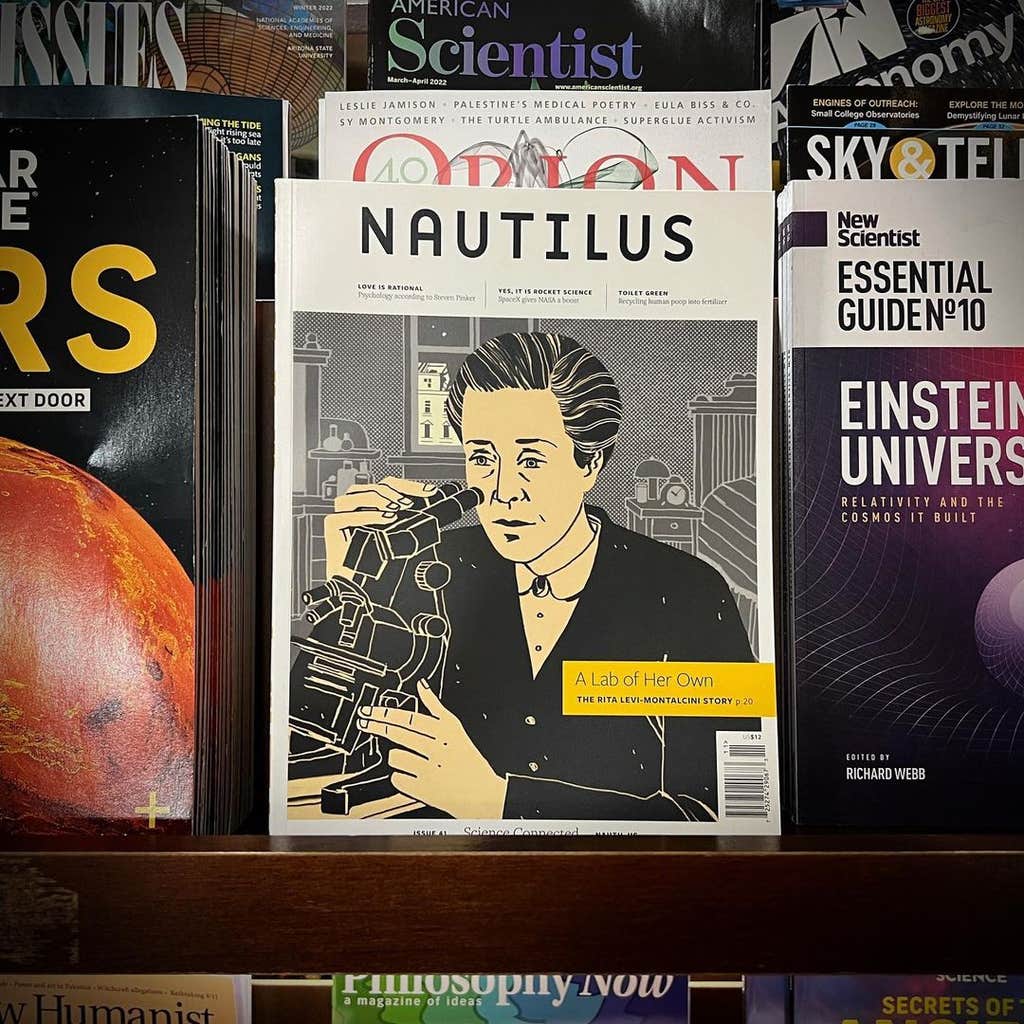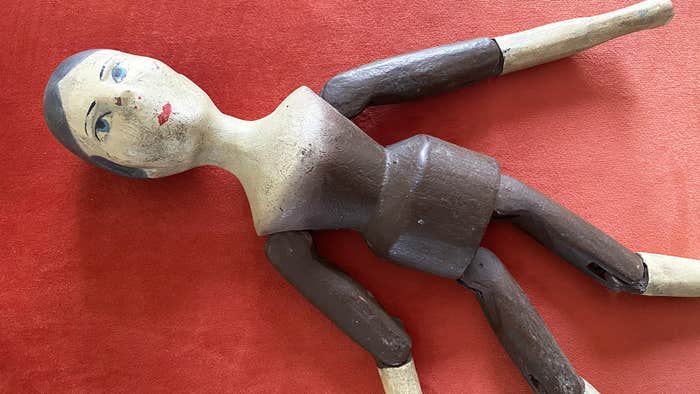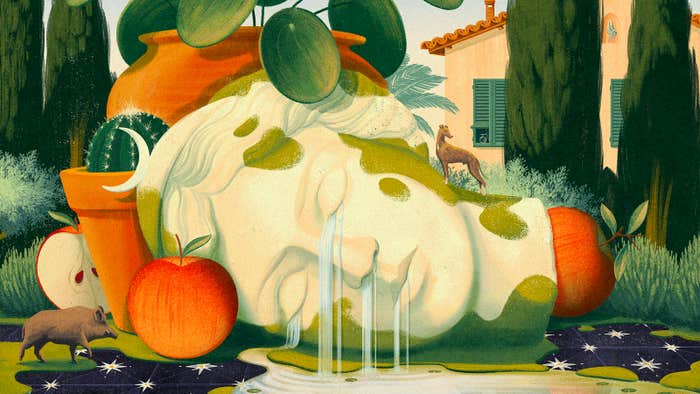
This article is part of series of Nautilus interviews with artists, you can read the rest here.
As a photographer and an illustrator, Jorge Colombo is a careful observer. Colombo used to spend his days walking the streets of New York City, taking in the scenes of city and live-sketching on his iPhone. His work captured little slices of city life, rich with verisimilitude and emotion. Since then he’s moved to a small hamlet in New York that’s anything but sleepy.
During a career that’s spanned three decades, Colombo has illustrated covers for The New Yorker—including the first magazine cover created on an iPhone—and several for Nautilus as well. Recently, he created the portraits for our “Talk About the Passion” feature. He was kind enough to answer our questions about his creative process, the inspiration he draws from science, and his favorite Nautilus cover.
You’ve been a working artist for over 30 years. What attracted you to the arts in the first place, and how has your work changed over the years?
It’s been too long to remember about “the first place,” but the current motivation seems to be documenting the reality that surrounds me (even if I paraphrase it a bit), recording my thoughts and feelings before they mutate. In other words: trying to freeze time. Not every artist I admire shares the same goal, of course, but it’s always fascinating to witness the way their minds can stretch out.
You were around 26 years old when you moved from Portugal to the United States. How does your heritage influence your practice?
I was lucky enough to be surrounded by people who were passionate about arts and culture, and who trusted and boosted me. European countries tend to offer eclectic cultural scenes—equal attention dedicated to diverse disciplines. You travel more, you speak other languages, you are more open. I only spent six years of my professional life in Portugal, more than half of my life happened in an American context, but the cultural roots are planted in Lisbon.

What’s a typical day like for you? Walk us through your process.
I wish I had a typical day, but no. I can be all drawing, all chores, all photos, all procrastinating. I live on Main Street in a very small town, which leads to lots of socializing, bumping into everyone I know along my block. I just got a couple kittens though, and they may force me to keep stricter routines: all the feeding, the scheduled playing, the afternoon naps where I can get quiet time at my desk.
How do you know when a project is finished?
Gut feeling: You feel bored. The richer question is: When do I realize the results won’t be perfect? Very early on, I say. A few lines into the project, I see it descending from divine to simply human, displaying those shortcomings of mine I know so well. Still I carry on, trying to push things back into perfection, but learning one may never reach it is a lesson that takes some time to learn.

You illustrated the portraits that accompanied our feature “Talk About the Passion” where we asked scientists what artwork inspired them and artists what in science inspired them. As an artist yourself, is there anything in science that inspires you?
The method! It’s not that I have any scientific training, but everything I learn about research and experimentation and testing sounds appealing to my needs. Artistic creation offers so many fuzzy areas, it’s useful to be able to find a few certainties to build upon.
Is there anything you think scientists can learn from artists—or vice versa?
I don’t know enough scientists, but those I met tend to be as open-minded as artists.
In addition to illustrations, you’ve created the artwork for a number of Nautilus covers. Do you have a favorite?
The Rita Levi-Montalcini cover. It was a straightforward scene, always exciting to do, pretending I actually had been there. I remember researching the Italian bedroom furniture from Una giornata particolare, a movie set in the Mussolini years. Details are everything.

A lot of your art, your New Yorker covers in particular, capture poignant “slice of life” vignettes. How do you decide what makes a compelling scene? Are there certain emotions or moods you’re interested in portraying?
This applies to many things, not necessarily just New York City vistas, but you strive to retain the gaze of a tourist or a newcomer, even if you are familiar with the subject. One can try that with people: If you didn’t know someone is funny, or gentle, would you find them scary (or vice-versa) on a first encounter? What were one’s first impressions of New York City, even before you actually set foot there? Can you still access them?
As Françoise Mouly, the covers editor of The New Yorker, once pointed out to me, we are not just addressing insiders, we’re responding to a perception of New York City, as idealized by a public that in a great part may have never even been there. Of course you mix that with details you acquire as a resident—as I was for 20 years—but these images are still as much of a myth as they are a document.

One of your New Yorker covers depicts life in the city during the first year of the COVID-19 pandemic. How did the pandemic affect your live drawings or your artwork in general?
Not much, really. There was a lot of cautious pod socializing here, and enough space and nature around to keep a semblance of normality. Trips to the city were a contrast, of course. As so often happens, I tried to capture timely details, and I was happy to immortalize the COVID-19 fashion of dangling a mask from your ear as you eat on the New Yorker cover.
Not long ago, you moved from New York City to a much smaller town. Has that changed your creative process at all?
It’s far more social than living in the city, especially if you live on Main Street. It’s easier to stay invisible or secluded in New York City. On the other hand, I’m constantly involved in projects with or for people around here, and that’s interesting in that your audience becomes more specific. You know most of them by name, it’s not an abstract “public.” For a communicator, that’s kind of a luxury. Artmaking gets closer to a conversation than simply a broadcast.

Technology has had a big impact on your career—you illustrated the first magazine cover ever created on a smartphone. One technological development that’s causing controversy in the artistic community is the rise of generative AI image services like Midjourney. What are your thoughts on AI and art?
I started using digital drawing with a resolutely 19th-century attitude—my pictures were more impressionist than sci-fi—and that may have accounted for the fluid results and the nice reception. Drawing on a portable device that allowed for endless undos and supplied a finished result was high on my wishlist, it corresponded to a need of mine.
AI, I haven’t been paying a lot of attention to it, but it’s the sort of development I don’t feel lacking in my toolkit. Solving creative challenges on my own is still rewarding enough. Right now I have only seen the ridiculous stuff—the bland platitudes, the composite art counterfeits—but I’m sure someone will eventually be intelligent enough to use it right.
Interview by Jake Currie.
Lead image courtesy of Jorge Colombo.



























